All About the Client: James Goodnow of Fennemore Craig, P.C.
November 13, 2018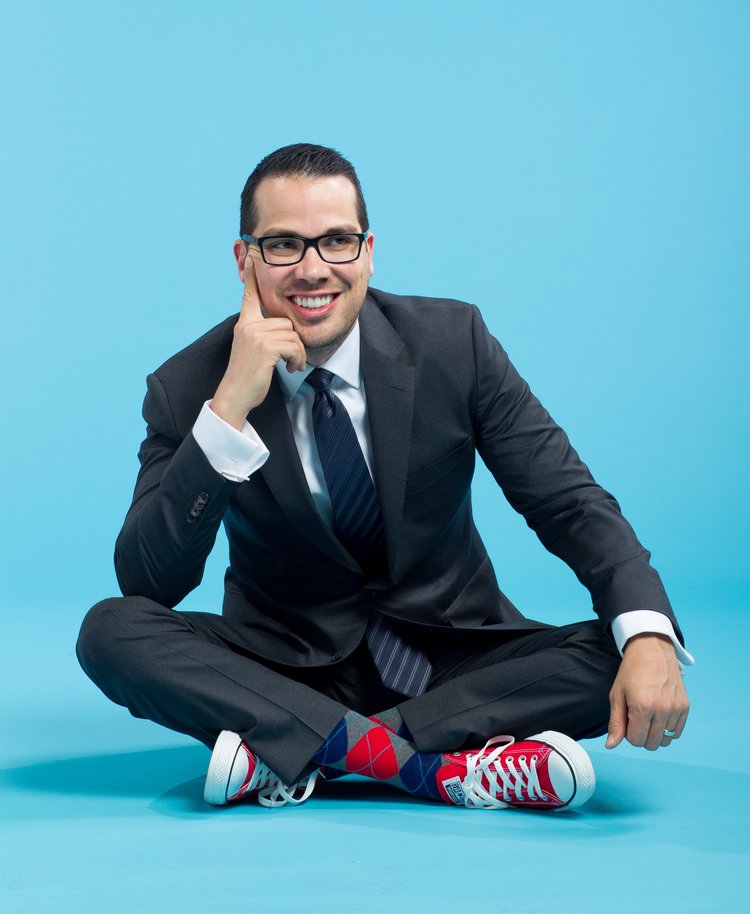
Last week, we sat down with James Goodnow, President and Managing Partner of Fennemore Craig, P.C., and one half of Lamber Goodnow, the plaintiff’s practice within Fennemore Craig he helped build. We talked about how he created a digital brand for his law firm’s two-man practice group, why lawyers shouldn’t attend (only) legal conferences, and the three things all lawyers should be doing to grow their own practices.
Thanks for meeting with us, James. We were fascinated by how you created an entirely separate brand—Lamber Goodnow—for your plaintiff's practice within Fennemore Craig, one of the largest law firms in Arizona. How did Lamber Goodnow come to be?
My legal background is in plaintiff's catastrophic and wrongful death litigation, and when I started working at Fennemore Craig, I worked in a very small plaintiff’s practice alongside my partner Marc Lamber. You typically won’t see a plaintiff’s practice in a large corporate law firm like Fennemore Craig, but it’s what makes it unique; the firm is entrepreneurial and we’ve had this practice for over 25 years.
In 2011, Marc and I were generating 100% of our new business through referrals, which is the way many lawyers get business. The problem with that, especially in a contingency practice like ours, is that the work can be very sporadic. We were averaging one inbound call per week. For a plaintiff’s practice that’s high-risk, we really needed to have a steady flow of cases coming in to generate business.
We realized we needed a consumer-facing website that was entirely different than the corporate law site of Fennemore Craig—a separate brand, really—because our plaintiff practice clients are different than our corporate clients. The large parent firm of Fennemore Craig is marketing to in-house counsel, CEOs, and sophisticated corporate clientele. But people impacted by catastrophic injury and wrongful death are from all walks of life, many of whom have never dealt with lawyers before. So we needed to create a website with content that was more approachable, that had appropriate content, keywords, tags, different search engine optimization, etc. That wasn’t possible on the Fennemore Craig site. Lamber Goodnow isn’t a separate legal entity; it’s fully part of Fennemore Craig. It’s just the branding platform we use for our consumer-based, PI clients.
How did you manage to get buy-in from the leadership to do that? How did you get it off the ground?
Once we captured this idea that we needed an internet- and SEO-based marketing site, the next question was: how do we make this a reality? So we started by doing our due diligence. I had some friends from college who worked at Google, and we talked with them and learned about opportunities that existed in search engine marketing. We educated ourselves and worked with consultants to put together a business plan. That business plan required us to build a unique website that incorporated the fundamentals of SEO.
We took the idea to the firm’s leadership, and though they were open and receptive to it, it was still a foreign concept to them. They were happy to let us test our new idea, but in terms of funding it, they wanted to know—as any good business would—what the ROI would be. We couldn’t answer that. So Marc and I convinced them to allow us to do a proof of concept. Marc and I actually spent our own personal money doing that proof of concept.
We built out the website, did the initial development, optimized it for SEO, and six months later, the site went live. We quickly found out we were able to generate a pipeline of cases that we couldn’t otherwise. And as we gained some traction, we were able to get on the first page of Google by just following some fundamental steps. It was 2012, so what we were doing wasn’t exactly novel in the corporate world, but for a law firm, it was. Once we proved the idea was successful and that there was a significant return on our investment, the firm started investing in it, which has taken Lamber Goodnow to where it is today.
What was the impact your new marketing strategy had on your practice?
Before we started, we received maybe one call per week. Now, we often get in excess of thirty calls per day. We were clearly able to generate work in ways that even the most proficient lawyers in the old-school networking approach could not. We knew this was the way we needed to go.
We also knew that we, our firm, needed to learn more about search marketing and how it worked. I think what a lot of lawyers do—and I think it’s the wrong strategy—is rely on consultants for everything. It turns out, as we learned, that consultants are only giving a small slice of their time and there’s only so far they can take your marketing.
Both my partner and I devote a good amount of our time to understanding SEO and what drives web traffic. Search engine marketing is a large part of our jobs.
Up until a year ago, when I rotated into my current position, most of the conferences I went to were not legal conferences. I would go to conferences like MozCon and large SEO conferences being offered around the country. I was usually the only lawyer there among thousands of attendees. I spent a lot of my time in that world. We found that once we took the marketing over ourselves, truly learned and lived it, the results continued to improve exponentially.
What else did you do to launch this new brand? Was it just the website?
Well, it’s a multi-faceted approach, which includes linking strategy, conversion strategy, video, and content. You’ll see we have thousands of pages now that are very content-rich.
But there’s been a lot of experimentation, and a lot of failure. I don’t want to make it sound like everything we did turned to gold, because that’s not true. We had to try different approaches, and we’ve put money into strategies that have completely fallen flat. That’s a necessary part of success and of building any practice or marketing strategy: a willingness to fail and accept that there might even be financial consequences associated with it.
Can you give us an example of a tactic that failed?
Yes, and one is quite funny, actually. For a promotional shoot, we had photos of ourselves taken underwater, with the idea that if we created these crazy images, it would somehow attract business. The only thing it did was destroy our suits. I do think images can be powerful, but conversion isn’t just about images or any one thing. There’s a lot more to it, particularly on the content side, that people want. Because we have stats on everything on our site, which we track to ridiculously precise levels, we’re able to know with a pretty high degree of accuracy what’s working and what isn’t. We track what’s improving our domain authority, conversion, and all the other factors that go into ultimately having someone feel, based on what they see, that they’re comfortable calling us. That’s the goal.
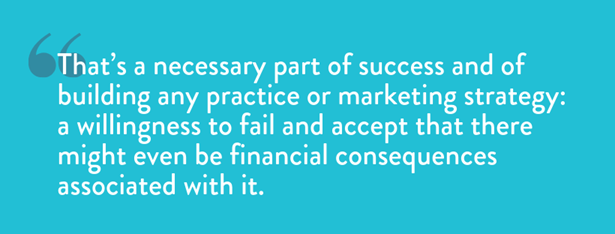
Do you have an in-house marketing team that helps you now? How do you manage it all?
We still use consultants, but we don’t rely on them like we used to. We get advice from them, but we don’t typically have them implement the strategy that’s developed. Most firms just toss the keys over to a consultant and say, hey, make this website rank well. But it just doesn't work that way. You have to be invested in it. That would be like hiring a marketing director and saying, hey, go get me ten meetings with in-house lawyers and put them on my calendar. It doesn't work that way. You have to be willing to put in the time yourself.
We do not have an internal SEO specialist or web specialist; Fennemore Craig has some internal developers, but we [Lamber Goodnow] handle our site on our own. We do have a communications specialist who helps with traditional PR, and he’s more of a general marketer.
A lot of lawyers think about marketing, and they know they should do more, but they feel they don’t have the time or the resources to do it well. If you were talking to a small firm, or one with limited resources, what would you tell them? Where’s the best place to start?
It really depends on the type of practice they have. But I think there are three principles that apply regardless of what type of practice you have.
First, I’d tell them they need to be spending at least 25% of their time on marketing. Period. I don’t care how successful you are; unless you’re spending time on business development—and that doesn’t necessarily mean marketing on the internet or making TV commercials—you won’t cultivate relationships. You should also be spending, depending on the nature of your practice, 25% of your revenue on that business development.
You have to spend real time, and you have to spend real money.
You should have some kind of social media presence, too. Even commercial litigation firms are creating social media personalities. Because most clients, whether it’s sophisticated in-house counsel or a consumer looking for a family lawyer—want a lawyer that’s real, someone they can connect with. You can be the best lawyer in the world, but if you’re working in a cave, and no one knows about you, it doesn’t do you any good to be the best.
My third principle is: stop doing what every other law firm is doing! If every other law firm is doing what you are, that's a good indicator of what you should not be doing. There’s a sea of similar firms in the legal industry, and they all tend to look the same. So there’s a huge opportunity, much more than other industries, for law firms to stand out. You have to be willing to take a little bit of a risk deviating from the norm.
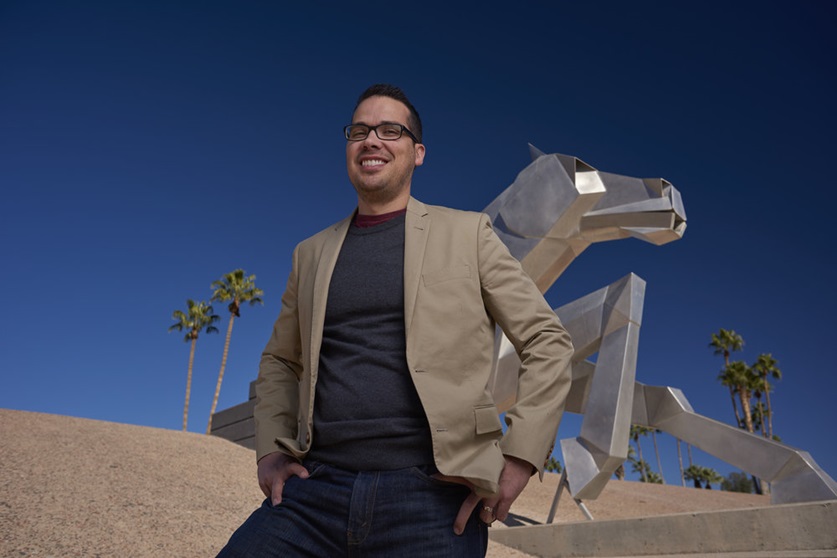
Earlier this year, you transitioned into your new role as Managing Partner of Fennemore Craig. How have you used some of these strategies to innovate firm-wide?
The short answer is, we’re trying to apply the lessons we’ve learned from Lamber Goodnow to all of Fennemore Craig. The longer answer is, to make change happen, you have to understand people, and lawyers specifically. When we started our branding experiment with Lamber Goodnow, there were some other lawyers who were raising their eyebrows and were skeptical at first. But once we were able to demonstrate success, they’ve bought into it and see that it works.
As a law firm, we have to be more innovative in order for us to succeed, and not just in marketing. So what I’ve been trying to do, with the help of a lot of talented people, is break from traditional ways of thinking and position our firm to be a leader in areas where firms of our size are not. So we launched an Innovation Committee. We’ve worked very closely with our IP department to get systems in place—data analytics, other tools—to understand how we do legal work. For example, how long does it take a matter to complete? How do we price appropriately? What are our competitors’ charging and what is demand in the market? Getting the right analytical tools in place allows us to understand how we’re putting our legal work together, how we’re staffing it, and what it’s costing us.
We’re also pushing aggressively into the startup market. We have venture accelerator where we take an equity position in a company, allow it to defer payment, and provide services to try to get the business off the ground and be successful. We’re one of the only firms in our market that truly partners with clients.
And we’ve partnered with several non-legal companies to create a suite of services that we can offer to clients that go beyond core legal services. More than anything, we’re trying to encourage our lawyers to do what they’re good at, but do it in new and creative ways that most firms are not.
What advice would you give to a young lawyer who wants to present innovative ideas to firm leadership, or make an impact on their law firm like you have?
Invest in yourself and in your ideas. One of the biggest mistakes I see lawyers make is the unwillingness to invest time or money in their careers. I’m sure I’m biased but had Marc and I not invested our own time and money into Lamber Goodnow, it wouldn’t be where it is today.
A friend of mine here says, “All lawyers should view themselves as their own mini law firms.” So you have to treat it like a true business, know the numbers, and take ownership of them.
A lot of lawyers, especially at large law firms, are wrapped in bubble wrap. Historically, work would flow to the lawyer just by showing up. But that’s not the world we live in anymore. There’s way more competition, and unless you’re at an AmLaw 25 firm, demand is flat. So you have to take ownership to be successful, treat your practice like its own business. That’s how I would encourage everyone in the legal market to think about themselves.
What do you see for the future of legal practice? For the business of practicing law?
Fierce competition. Traditional law firms face two problematic situations that they have to prepare for. The first is easy to see: the legal industry is changing at a breakneck pace. Boutique law firms have learned how to commoditize entire industries, firms like Ogletree who are practicing only employment law and know how to do it very inexpensively.
We continue to see legal work migrating in-house. For the past five years, legal departments have increased in size because they understand that if law firms aren’t going to adapt, they have to. They’re implementing the business necessities of driving down legal spend and getting better outcomes. And they’re doing it more effectively.
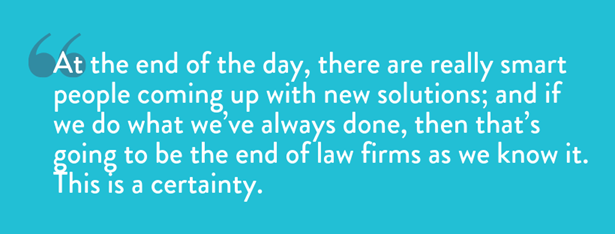
Then there’s the rise of AI technology that is doing what was often bread-and-butter work of associates in law firms. There are virtual, cloud-based law firms, the fastest growing segment of the legal industry, with no brick and mortar presence to them. There are the big four accounting firms providing alternative legal services. At the end of the day, there are really smart people coming up with new solutions; and if we do what we’ve always done then that’s going to be the end of law firms as we know it. It requires adaptation. This is a certainty.
The second part, which isn’t so certain, has to do with the stock market. We were in the midst of the longest bull market in history, but what we’ve seen recently is a lot of volatility in the market. So what does that mean for us? We didn’t ride the wave up with our clients, and we know that we haven’t—demand has remained flat over the last five years, and mostly since 2008, except for the largest firms—but we’re definitely going to ride the wave down. There is a correction that has to be coming, and it’s only a matter of when. Clients will divert their money away from law firms very quickly and into these other channels much more rapidly than is even happening now, even in a bull market. So the changes that need to take place, need to start today. Frankly, they should have started several years ago. You have to keep moving and innovating, and I don’t think most law firms are doing that.
Well. Can we end this on a fun note?
[laughs] Yes.
We saw that you were the first lawyer ever to be featured in an Apple commercial! What’s the story behind that?
Several years ago, shortly after the iPad came out, we replaced our traditional demand letter—which concludes with a demand for money or settlement—with a video on an iPad. We would send the iPad to opposing counsel in a briefcase with noise-canceling headphones. We would make our case in the video—feature our experts, our clients—in a very Dateline NBC-type fashion.
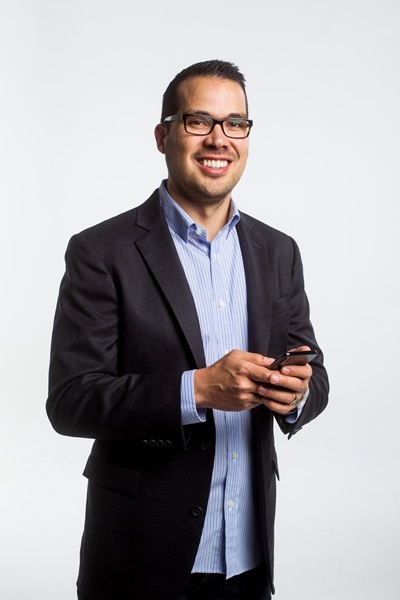
Apple got wind of it and contacted us, and they profiled us in a case study about how businesses were using the iPad. About a year later, they called back and asked if I’d appear in a commercial. Being a huge Apple geek, I said, of course!
The best part about it was interacting with their senior marketing team. I asked them: if you were marketing in the legal space, how would you approach it? Obviously, they’re looking at it from a big picture perspective, but what they told me is law firms are going about it all wrong. We’re not thinking about legal practice from a client perspective. Legal marketing is always done from the lawyer’s perspective, trumpeting how good we are. We’re not marketing from the client’s perspective. It was a pretty interesting insight and one I thought was dead-on.
It’s been all about us when it should really be all about the client. Whether in marketing or practice—that focus is what makes the difference.